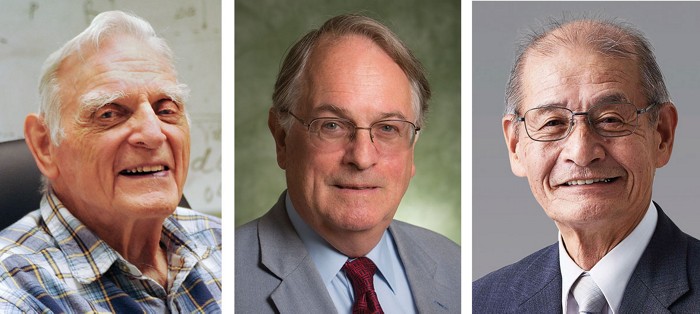 Three scientists, including the oldest ever winner have taken home the 2019 Nobel Prize in Chemistry for creating the rechargeable battery.
Three scientists, including the oldest ever winner have taken home the 2019 Nobel Prize in Chemistry for creating the rechargeable battery.
The trio, John B. Goodenough, Stanley Whittingham and Akira Yoshino will share the nine million krona prize (£740,099). At 97, Mr. Goodenough is the oldest ever winner of a Nobel prize.
The three worked together on developing and refining rechargeable lithium-ion batteries, making the age of global information technology, mobile and fossil-fuel- free revolutions possible.
The Nobel Prize in Chemistry, awarded by the Royal Swedish Academy of Science recognized the three scientists’ revolutionary invention: the lithium-ion battery said to be crucial in the creation of wireless and fossil- fuel-free technology
While Whittingham laid the foundation for the batteries which use the basic principles of an anode and cathode, Goodenough and Yoshino perfected it and made it commercially viable.
Whittingham began developing the first lithium-ion battery in the United States during the oil crisis in the 1970s. Amid a push to invent fossil- fuel-free energy technologies, he was hired by Exxon where he researched on superconductors.
Through his experiments, the 77-year-old Whittingham who is a British-American professor of chemistry at Binghamton University discovered that Titanium Disulphide, an energy-rich material could be used as a cathode in a battery.
Combined with a cathode of metallic lithium, which releases a lot of electrons, Whittingham then created a battery with immense potential. The problem however was that metallic lithium is very reactive and prone to explosions.
Goodenough furthered Whittingham’s work. He found out that using cobalt oxide instead of titanium disulphide in the cathode could produce a battery almost twice as powerful as Whittingham’s.
In 1985, Yoshino went a step further and created the first commercially viable lithium-ion battery as Japanese electronics companies were increasingly pushing for lightweight, high-capacity batteries.
The 71-year-old Yoshino used petroleum coke, a carbon-based byproduct of the oil industry in the anode to eliminate the use of pure lithium, which is extremely reactive and relied entirely on lithium ions. The change resulted in a rechargeable and durable battery.
Since 1991 when lithium-ion batteries made their commercial debut, the batteries have come a long way and made wireless devices and renewable energy viable.
When in use, a chemical reaction in the battery causes a buildup of electrons at the anode. Blocked by the electrolyte and with nowhere to go, the electron travels through the completed circuit and to the cathode, where there are fewer electrons. This flow of electrons powers devices.
A member of the Nobel committee for chemistry, Peter Somfai explained why it was clear that the trio should win the award.
“This is a technology we use every day. Most people have a mobile phone, electric vehicles are getting more popular. So, it’s pretty straightforward why it’s an important discovery,” Somfai said.
The Nobel Prizes for Physics, Chemistry, Physiology or Medicine, Literature and Peace were founded by Alfred Nobel, a Swedish industrialist and the inventor of the dynamite.
The winners of the latest prizes will receive their gold medals, cash and diploma at a ceremony scheduled to be held on December 10, the anniversary of Nobel’s death in 1896.

ByteDance Refuses TikTok Sale Despite US Pressure, Plans Legal Challenge
Harvey Weinstein’s Rape Conviction Overturned, Paving Way For New Trial
Biden Administration Imposes New Sanctions On Iran Following Attack On Israel
Israel’s European Allies Urge Restraint Amid Escalating Tensions With Iran